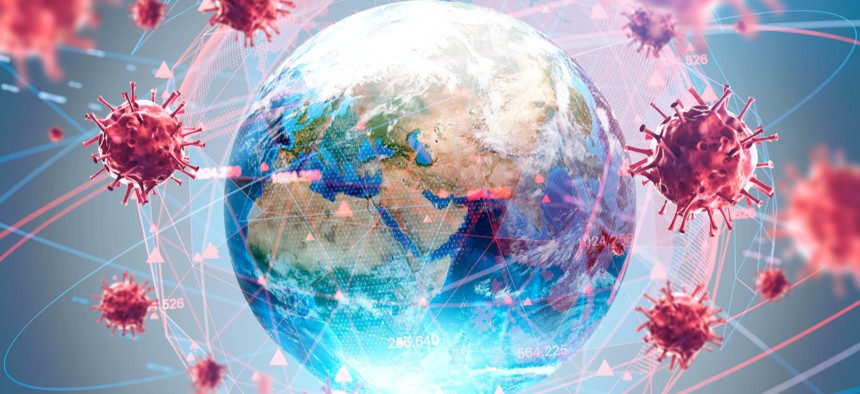Biden’s Wave of COVID-19 Executive Orders Relies On Data To Implement

ImageFlow/Shutterstock
While technology is not the main focus of the pandemic response plan, collecting and disseminating more data is a recurring theme.
On his first full day in office, President Joe Biden began implementation of his administration’s COVID-19 plan, which includes major pushes to collect and release more data on the pandemic and help non-federal entities get better technology to bolster their response.
The COVID-19 plan—established through a set of 10 executive orders—has seven stated goals designed to get the pandemic under control and protect the broadest, most equitable number of Americans. While the use of technology is not mentioned among those goals, the meat of the proposal includes a heavy reliance on data and efforts to improve data collection.
This is apparent from the first goal: Restore trust with the American People.
“The federal government should be the source of truth for the public to get clear, accessible and scientifically accurate information about COVID-19,” according to an executive summary of the strategy released Thursday, which calls out the need to rely on science. The orders were expected to be signed by Biden Thursday afternoon.
A pillar of the plan is to use metrics to better understand how the virus is spreading, where it is under control and what actions should be taken at the federal and local levels at any given time. To make this exercise valid, the administration will need to collect a lot of data.
An executive order on “Ensuring a Data-Driven Response to COVID-19 and Future High Consequence Public Health Threats” focuses on “federal agencies’ collection, production sharing and analysis of, and collaboration with respect to, data to support an equitable COVID-19 response and recovery,” the summary states. That will include using data for a more concerted vaccine rollout and to inform public health policies, such as in public buildings—like schools—and transportation—including private transportation like airplanes and public transportation like buses.
Data is a focus in the second goal, as well, which includes a heading to “Bolster data systems and transparency for vaccinations.”
“The operational complexity of vaccinating the public will make robust data and its use in decision-making related to vaccinations more important than ever,” the summary states. “The federal government, with CDC, will track distribution and vaccination progress, working hand-in-hand with states and localities to support their efforts.”
Much of this work will focus on “removing impediments” from federal data sharing regulations and “developing communication and technical assistance plans” for downstream vaccine distribution.
The plan also vows to use data in the decision-making process at the highest levels of the administration and Health and Human Services Department, including in the development of public health guidance.
One thing not covered by Thursday’s executive orders is exactly how that data will be chopped up and analyzed. While the push to improve COVID-19 data collection does include public-facing dashboards “with national and state-by-state level information, consistent with privacy protections, on cases, testing, vaccinations and hospital admissions to make real-time information available to policymakers and the public,” it does not offer details on the data science that will go into those visualizations and other decision-making efforts.
But the orders do acknowledge that these things are needed, as well as additional technologies to support those efforts.
“The federal government will facilitate evidence-based decision-making through focused data-based projects,” the plan states. “In addition, critical response activities such as workforce mobilization and vaccination appointment scheduling may require new technology solutions. The federal government will provide technical support to ensure that these systems meet mission critical requirements to support a robust response.”
Specific data efforts show up in other parts of the pandemic orders, including expanding “equity data collection” to ensure minority and underserved communities are getting equal, quality care.
“The federal government will drive equity in vaccinations by using demographic data to identify communities hit hardest by the virus and supporting them, ensuring no out-of-pocket costs for vaccinations, and making sure vaccines reach those communities,” the summary states.
A section on improving U.S. leadership on global health matters, writ-large, gives the assistant to the president for national security affairs a 180-day deadline to complete a review of the country’s pandemic preparations, including making recommendations on “public health data modernization.”
NEXT STORY: Biden Issues Sweeping Ethics Plan for Appointees



